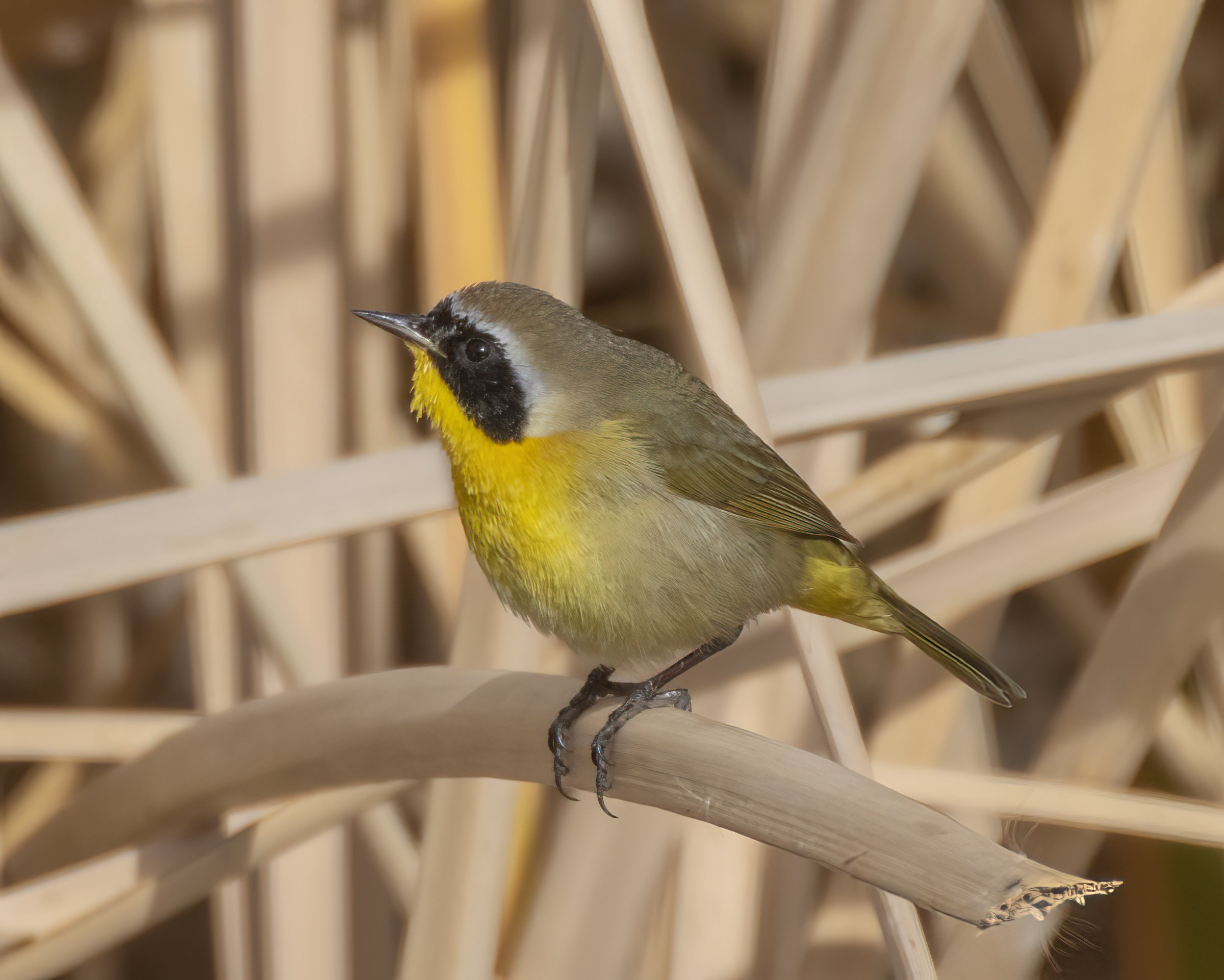Birds of the Whitewater Preserve: Common Yellowthroat
Field Notes by Stephen Myers, ornithologist and leader of bird walks at Whitewater Preserve
Common Yellowthroat / photo by Stephen Myers
Witchity witchity witchity! This song, given frequently between March and August from marshes, dense willow scrub, and weedy areas, is one of the most commonly heard sounds at Whitewater Preserve during the nesting season. It belongs to the Common Yellowthroat (Geothlypis trichas), one of our beautiful North American wood-warblers.
The Common Yellowthroat breeds from extreme southeastern Alaska east across much of Canada to the Atlantic coast, and south throughout the U.S., except in the driest habitats. The breeding range extends as far south as central Mexico and south Florida. During winter, most Common Yellowthroats migrate south to Mexico and Central America. Relatively small numbers spend the winter in the southern U.S., including in California and Arizona in the west, and from the Texas coast throughout the southeastern U.S. to the Carolinas.
Rangewide, nesting habitats include weedy fields, swamps, brambles, marshes, and dense undergrowth of forests. Nests are in reeds, cattails, briars, and other dense herbaceous plants, and are usually on the ground or within a few inches above ground. The female builds the nest, which is a cup comprised of grass stems, reeds, leaves, and shreds of bark. Only the female incubates, and the eggs hatch in about 12 days. The nestlings fledge about 10 days after hatching. I have observed male Common Yellowthroats performing distraction displays, feigning a broken wing, when I was obviously too close to a nest.
The diets of Common Yellowthroats are mainly arthropods, including spiders, beetles, flies, bees and wasps, and true bugs. Prey is usually taken by gleaning from foliage. A few seeds are also eaten.
Identifying adult male Common Yellowthroats is straightforward. It is the only warbler in our area with a broad black mask surrounding the eyes and extending around the forehead. The black is bordered by a thinner, whitish line on top and wrapping around the ear coverts. In the fall, immature males have some black in the face, but the black mask is not yet well developed. Females are more confusing. They lack the black mask, and have a white eyering. Since their faces are grayish, they can be confused with Nashville Warblers (Leiothlypis ruficapilla). Another good clue to the identity of Common Yellowthroats is their proclivity to occur in marshy habitat.
In addition to the distinctive male song (“witchity…”), males and females frequently give call notes that various authors present as “chit,” “schick,” or “tchat.” Since these calls are given often, they are easily learned if a birder spends some time around their marshy habitats.
Although Common Yellowthroats are fairly common breeders in suitable habitat, they are considered “skulkers,” spending most of their time deep within the foliage. It usually takes a lot of patience to get good looks at them. Photographers, especially, must be very patient, waiting for just the right moment to get that “money shot.” I have been photographing birds fairly seriously for about 30 years, and only last year was I able to get what I consider to be a good image.
Join Us for Bird Walks at Whitewater Preserve!
Curious to spot a Common Yellowthroat in the wild? Join us for biweekly bird walks at Whitewater Preserve, led by our resident ornithologist Stephen Myers. These guided walks are a great way to explore local birdlife and sharpen your birding skills.
Check the programs calendar to see upcoming dates!

